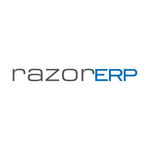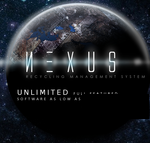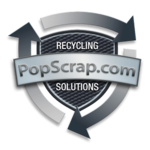What Is Recycling Software?
Recycling software is a specialized technology that helps businesses and organizations manage their recycling activities. It automates and streamlines all aspects of the recycling process, including data gathering, analysis, tracking, and reporting. This software is essential for businesses seeking to improve efficiency, decrease waste, and achieve sustainability objectives.
Recycling software lets firms manage recyclable materials from collection to processing and resale. Businesses can improve the overall effectiveness of their recycling operations by using advanced features like real-time data tracking, automatic sorting, and route optimization. This not only boosts profits but also contributes significantly to environmental protection.
One of the primary advantages of recycling software is its capacity to collect and analyze data throughout the recycling process. This allows firms to detect inefficiencies, track performance, and make informed decisions to improve their recycling operations. The software also includes sophisticated reporting options, allowing businesses to track their progress toward sustainability targets and comply with requirements.
Recycling software is available in a variety of formats, including web-based, cloud-based, and hybrid systems, to meet the unique demands and budgets of each firm. Some software also supports mobile tracking and data entry. Furthermore, many solutions work smoothly with existing systems, improving data transfer and analysis efficiency.
What Are The Recent Trends In Recycling Software?
Technology has played a critical part in propelling the recycling sector forward, and recycling software has grown in popularity in recent years. With an emphasis on sustainability and environmental responsibility, businesses of all kinds are turning to recycling software to automate their recycling operations and meet their waste reduction targets. One of the latest trends in recycling software is the use of artificial intelligence (AI) and machine learning (ML) capabilities.
This enables the software to analyze data and make better judgments, resulting in more efficient and effective recycling operations. Recycling software using AI and ML can discover patterns, estimate demand, and optimize trash management, resulting in lower costs and higher recycling rates. Another idea is to incorporate Internet of Things (IoT) technology into recycling software.
IoT sensors can be added to recycling containers, bins, and machines to gather real-time information about garbage levels, equipment performance, and worker efficiency. This information can then be used to optimize operations, eliminate downtime, and identify areas for improvement in the recycling process. Many recycling software solutions now include mobile apps, allowing businesses to manage their recycling operations on the go.
These apps offer real-time updates, access to data and analytics, and the opportunity to issue work orders and schedule pickups, making it easier for businesses to keep track of their recycling efforts. Furthermore, there has been a greater emphasis on data security and privacy in recycling software. With the development of cyber risks and data breaches, organizations must ensure that their recycling software has strong security mechanisms in place to secure critical information.
Finally, the integration of big data and analytics tools into recycling software has enabled organizations to obtain a better understanding of their recycling processes and discover areas for improvement. Businesses may enhance their overall recycling effectiveness by tracking and analyzing data such as trash composition, contamination rates, and recycling rates.
Benefits Of Using Recycling Software
Recycling software is a must-have tool for businesses and organizations trying to improve their recycling procedures and efficiency. Recycling has become an important feature for businesses in a variety of industries as the focus shifts toward sustainability and decreasing environmental impact.
Let's explore, we'll look at the advantages of adopting recycling software and how it can help you make a big difference for the environment while saving time and money.
1. Improved Tracking And Reporting Abilities: One of the most significant benefits of recycling software is its ability to effectively track and report on recycling data. This comprises the types and quantities of items recycled, the regularity with which recycling is picked up, and the accompanying expenditures. This information is critical for organizations to better understand their recycling habits and identify areas for development.
2. Improved Efficiency And Cost Savings: Software automates the recycling process, eliminating the need for human tracking and documentation while saving time and decreasing errors. It also improves waste collection and management, resulting in cost savings. Businesses with real-time data may track their recycling progress and make data-driven decisions to increase efficiency even further.
3. Efficient Communication And Collaboration: Recycling software offers seamless communication and collaboration among various parties, including employees, trash management businesses, and suppliers. This encourages transparency and improves cooperation, ensuring that recycling activities are consistent and successful.
4. Compliance With Regulations: Recycling software enables businesses to easily track their recycling operations and maintain compliance with local and federal standards. This includes accurately reporting trash data and following correct disposal processes to prevent penalties and harmful environmental consequences.
5. Enhanced Sustainability Efforts: By measuring and monitoring recycling data, firms can identify their most significant waste streams and develop reduction or elimination strategies. This not only reduces total costs but also coincides with ecological goals, resulting in a greener planet.
Important Factors To Consider While Purchasing Recycling Software?
Recycling has become a critical component of sustainability for businesses and organizations all over the world. The demand for efficient waste management and recycling operations grows, as does the need for dependable and effective recycling software. With so many alternatives on the market, it can be difficult to choose which recycling software is the best fit for your individual requirements.
To make an informed decision, here are some crucial elements to consider when selecting recycling software:
1. Compatibility And Integration: The first consideration is if the recycling software is compatible with your existing systems. It should be able to interact easily with your existing waste management systems, reducing the need for extra manual labor and streamlining operations.
2. Functionality And Features: Because recycling software has different features and functions, it's critical to examine your individual needs. Material monitoring, reporting and analytics, customer administration, invoicing, and billing capabilities are some of the most important elements to consider.
3. Customization Options: Each recycling company or group has its own processes and requirements. As a result, it is critical to select software that is customizable to meet your individual requirements. This ensures that the software is tailored to your individual recycling processes and workflows.
4. User-Friendly Interface: The usability and user-friendliness of software have a substantial impact on its efficacy. A convoluted and difficult-to-navigate interface can cause user annoyance and errors, leading to wasteful software use. Look for recycling software with a simple and intuitive interface that your employees can learn and utilize.
5. Scalability: As your recycling firm expands, you will probably need to extend your operations. As a result, it's critical to select recycling software that is scalable and can support future expansion. This will save you the time and money of upgrading to new software in the future.
6. Support And Training: In order for your team to use new software efficiently, they will need to learn and be trained. As a result, it is critical to investigate the support and training options offered by the recycling software business. To guarantee a seamless onboarding experience, seek out software vendors who give training, tutorials, manuals, and responsive customer support.
7. Data Security: Recycling organizations, like all other industries, handle sensitive consumer information and data. As a result, it is critical to use software that ensures data security and complies with privacy requirements. To protect your data, look for software that has data encryption, backups on a regular basis, and user authentication.
When selecting recycling software, consider these crucial considerations to make an informed selection and select the finest software to fit your company's or organization's specific needs. Investing in the proper recycling software can assist to improve your waste management procedures, boost efficiency, and contribute to a more sustainable future.
What Are The Key Features To Look For In Recycling Software?
When searching for the best recycling software for your company, you should examine a number of critical aspects that can improve your recycling processes and increase efficiency.
Here are the key features to consider when comparing recycling software alternatives.
1. configurable Platform: A good recycling software should be fully configurable to match the unique needs and workflows of your organization. This refers to the capacity to add and remove features, change settings, and integrate with other systems.
2. Comprehensive Data Management: One of the key functions of recycling software is to collect and manage information about your recycling processes. The software should have strong data management features, such as tracking, reporting, and analysis, to assist you in making informed decisions and identifying areas for development.
3. User-Friendly Interface: The software's interface should be simple to explore and understand. This will ensure that your team can quickly understand and begin utilizing the program, avoiding a severe learning curve.
4. Automation Capabilities: Automation is an important tool that can save your company time and money by automating repetitive and time-consuming processes. Look for recycling software that automates chores like data entry, reporting, and invoice processing.
5. Mobile Device Compatibility: In today's mobile-driven environment, you must be able to use your recycling software while on the go. Many software alternatives now include mobile apps and browser compatibility, allowing you to control your recycling activities from anywhere.
6. Customer Support: Select a software vendor that provides extensive customer assistance. This can include free training, technical support, and frequent software updates to guarantee the software is performing well.
7. Integration With aAccounting Software: If your company employs accounting software, it is critical to select recycling software that works flawlessly with it. This will make it easier and more precise to track recycling expenses and revenue.
8. Sustainability Tracking: A great recycling software should be able to monitor and analyze your company's sustainability activities. This can include calculating the carbon footprint, trash diversion rates, and other important sustainability measures.
By taking these crucial aspects into account, you can make an informed selection about the best recycling software for your organization. Remember to conduct research on various providers, read customer reviews, and take advantage of free demonstrations and trials to find the greatest fit for your individual requirements.
Why Do Businesses Need Recycling Software?
Recycling is becoming increasingly significant for businesses as a means of reducing waste, lowering carbon footprints, and meeting environmental standards. As a result, investing in recycling software has become critical for companies of all sizes. This new technology provides a comprehensive solution for controlling recycling processes and optimizing operations, making it an essential tool for firms trying to boost their sustainability efforts.
For starters, recycling software makes it easier for firms to track and manage their recycling activities. Inventory tracking, waste reporting, and real-time analytics enable firms to obtain a better knowledge of their recycling processes and make informed decisions about future plans. Recycling software also provides automation features, which help firms save time and resources.
This includes automating garbage pickup schedules, creating recycling receipts and reports, and even ordering recycling materials as needed. This not only improves efficiency, but also decreases human error and the possibility of missing pickups or inaccurate data. Furthermore, recycling software enables organizations to comply with environmental rules and regulations.
Businesses that effectively manage and document recycling data may easily demonstrate their sustainability efforts while also ensuring compliance with local, state, and federal requirements. This not only decreases the likelihood of fines, but also enhances the company's reputation as a responsible and environmentally conscious enterprise. Furthermore, recycling software enables firms to interact and work with waste management organizations and recycling facilities.
This provides for a more efficient and transparent procedure, from scheduling pickups to tracking the progress of recycled materials, ensuring that everyone is on the same page.
How Much Time Is Required To Implement Recycling Software?
One of the most common concerns purchasers ask when considering deploying recycling software is, "How much time does it take?" While there is no single answer that applies to all recycling software systems, there are some important elements to consider when determining the implementation period. First and foremost, the software's complexity and usefulness will have a significant impact on the time necessary to develop.
Some recycling software solutions provide simple functionality and can be up and operating in a matter of days, while others may have more extensive functions that necessitate a longer implementation time. In addition, the organization's size and complexity are important considerations. Smaller businesses with simpler operations may be able to install recycling software faster than larger corporations with several sites and departments.
Another important consideration in software installation is the extent of customization necessary. Most recycling software solutions allow you to modify the program to specific needs and processes. However, depending on the scope and complexity of the changes required, this customization may necessitate more time and resources. It is important to note that the readiness and collaboration of internal teams might also have an impact on the implementation timeline.
To ensure a smooth and timely implementation, all stakeholders must be involved and on the same page throughout the process. On average, the deployment phase of recycling software might last from a few weeks to several months. Work together with the software vendor to develop a realistic schedule based on your organization's specific needs and expectations.
What Is The Level Of Customization Available In Recycling Software?
Recycling software is an invaluable resource for businesses, organizations, and governments seeking to streamline their recycling procedures and encourage environmentally friendly practices. One key factor to consider when selecting recycling software is the level of customization provided. This refers to the software's ability to be customized to meet the user's individual demands and requirements. The level of customisation varies substantially across different recycling software alternatives.
Some may have only a few basic customization options, but others may include a vast range of features and settings that can be changed. As a buyer, you should evaluate your specific requirements and choose which level of customisation will be most useful to your firm. One factor to consider is the option to personalize data fields. This allows users to add or delete categories and fields based on their recycling process.
For example, a company that recycles various materials may wish to include different categories for plastics, paper, and metals, whereas a municipality may want to collect data by neighborhood or kind of building. The ability to customize data fields ensures that the program appropriately reflects the organization's recycling practices and goals. Another key part of customization is the ability to change the reporting features.
This enables customers to generate customized reports to track their progress and assess the efficiency of their recycling initiatives. For example, a company may wish to generate a report detailing the quantity of waste diverted from landfills each month, whereas a municipality may want to track the average amount of recycling per household. Customizing reports allows users to collect and present data that is most relevant to their specific goals and needs.
Finally, the level of customization accessible in recycling software has a significant impact on its effectiveness and value to the user. It is critical to thoroughly evaluate the customization options of various software and select the one that best corresponds with your organization's recycling objectives and processes. Consider the extent of customization in terms of data fields, reporting, and other capabilities to determine the best fit for your requirements.
Which Industries Can Benefit The Most From Recycling Software?
Recycling software is fast becoming a vital tool for businesses and organizations across industries. With the increasing importance of sustainable practices and environmental responsibility, adopting recycling software has become critical for businesses aiming to decrease their carbon footprint and meet sustainability goals.
The following industries can benefit the most from recycling software:
1. Manufacturing: The manufacturing industry generates a considerable amount of trash, and appropriate waste management is critical to their sustainability efforts. Recycling software can help these businesses track waste output, identify waste reduction opportunities, and manage recycling processes more efficiently.
2. Retail: The retail business generates a substantial quantity of trash, including packing materials and unsold products. Retail organizations can use recycling software to monitor their waste streams, enhance their packaging procedures, and lessen their environmental effect.
3. Hospitality: Recycling software can significantly help hotels, restaurants, and other hospitality organizations. These enterprises generate a significant quantity of garbage, including food leftovers and single-use items. Recycling software can assist businesses in implementing effective waste management methods, reducing trash generation, and increasing their sustainability efforts.
4. Education: Schools and universities are not immune to waste production. Recycling software can help educational institutions measure waste generation, develop recycling programs, and teach students the value of appropriate waste management.
5. Healthcare: The healthcare industry generates a substantial quantity of trash, including medical supplies and single-use items. Recycling software can assist hospitals and clinics in correctly disposing of these materials, tracking waste generation, and identifying opportunities for improvement.
6. Government And Municipalities: Local governments and municipalities are in charge of providing waste management services to their communities. Recycling software can assist these organizations in tracking waste output, promoting recycling initiatives, and identifying cost-effective waste reduction strategies.
Conclusion
Finally, investing in recycling software can help your organization improve productivity, save money, and reduce its environmental impact. With the proper tools, you can streamline waste management procedures, track and report on recycling activities, and make data-driven decisions. However, before making a purchase, you should thoroughly examine your needs and take into account aspects such as budget, compatibility, and customer support.
By carefully analyzing your alternatives and picking a trustworthy and trusted software supplier, you can confidently adopt a recycling software solution that matches your specific needs while also contributing to a more sustainable future. We hope this buyer's guide has helped you find the best recycling software for your business. Thank you for reading.














